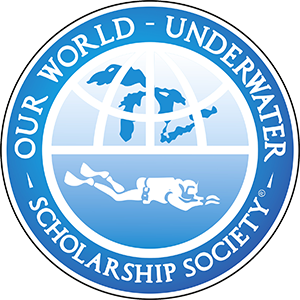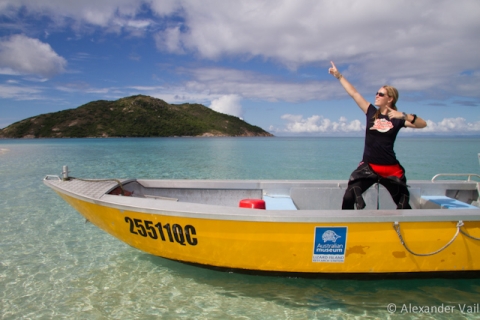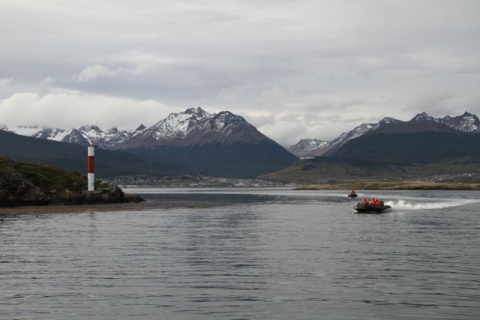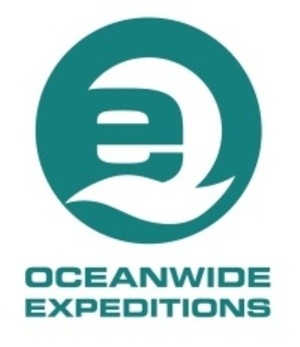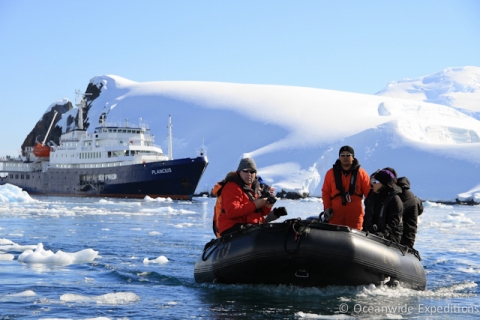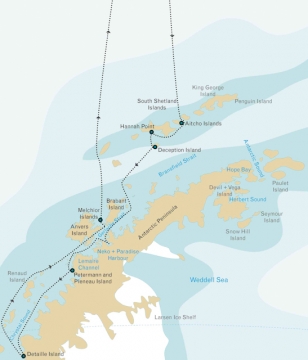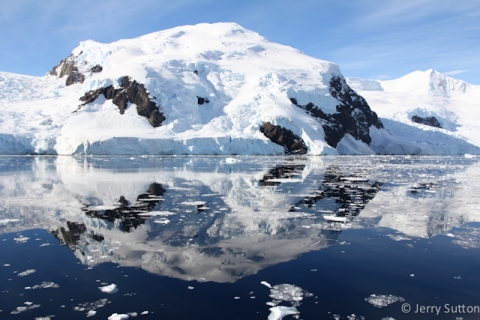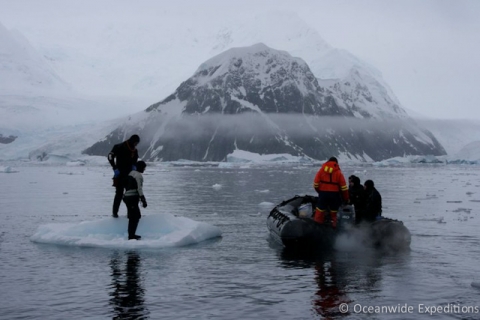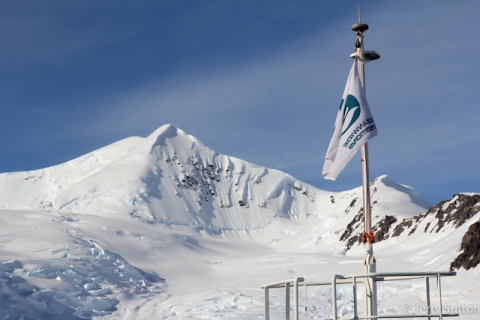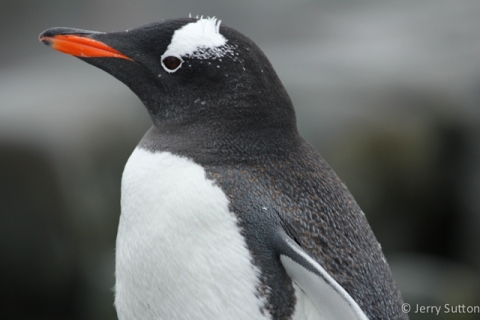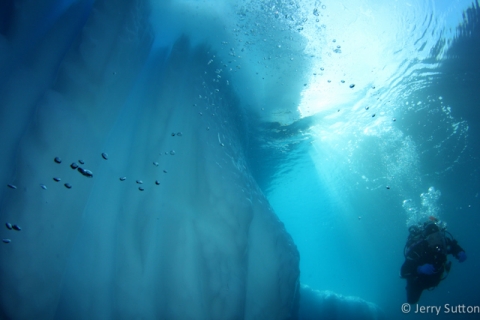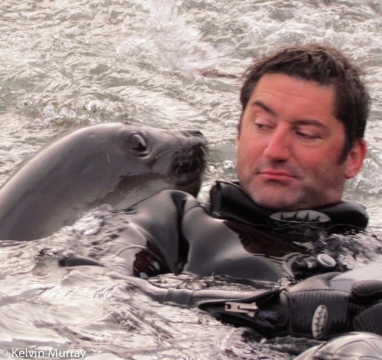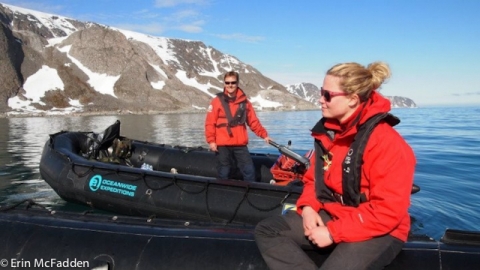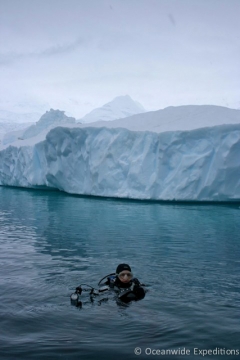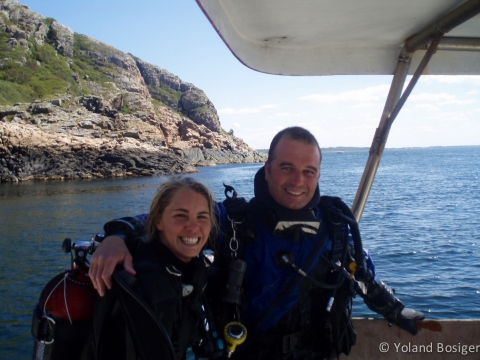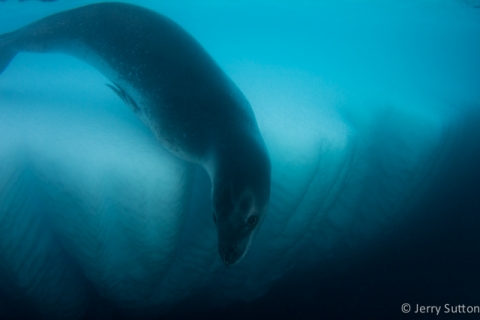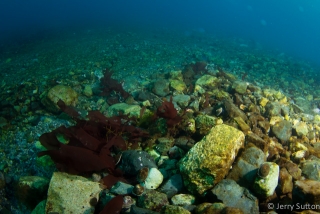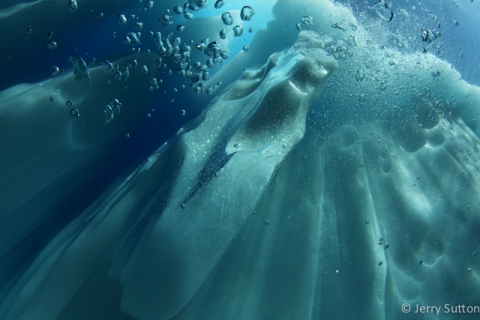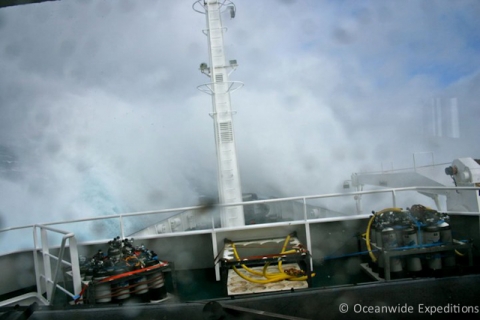The icy southern wind hits my face as I stare out over the Beagle Channel – a chilly reminder of where I’m headed. Having grown up most of my life in North Queensland Australia, you could say that I’m a little out of my comfort zone. Yet this is not new, and in fact it’s what my year as an OWUSS Rolex Scholar has been all about. To experience a wide range of different marine careers, and in the process be catapulted out of the comfortable and typical and into the extraordinary.
I’m writing to you from Ushuaia, the most southern major city in the world and a chief taking off point to Antarctica. Ushuaia is situated just outside the Tierra Del Fuego National Park and is a beautiful town where mountain peaks, glaciers, temperate forests and seas converge.
Thanks to the Our World Underwater Scholarship Society and Kelvin Murray at Silvertip Expeditions and Dive Management, I was accepted to go to Antarctica with Oceanwide Expeditions, a company that has been operating in expedition cruising for 26 years. Offering unique, small group expeditions, Oceanwide allows passengers to experience the most remote, untouched and spectacular ecosystems just like the early explorers (except with a little more comfort of course!).
To get to Antarctica from Ushuaia will take 2 days of steaming across Drakes Passage. I’ll be aboard the Oceanwide vessel, M/V Plancius, which is a 89 m long and 14.5 m wide ice breaker with a maximum capacity of 114 passengers.
So what’s in store for Antarctica? Although all itineraries are subject to change due to weather, our first trip will most likely make its way through the Drakes Passage and passed Aitcho Island at the South Shetlands. We will then reach Antarctica and spend about four days exploring the Antarctic continent and associated islands. If weather permits, the expedition will head further south, crossing the Antarctic circle to Detaille Island. At 66°52’ South this is about the furthest south you can go with an expedition vessel.
Oceanwide has expert guides and naturalists on board and my job will be to absorb as much information about Antarctica’s wildlife, history, and conservation as I can. I’ll be helping out the expedition staff and learning about what it’s like to work in the expedition industry.
Containing the geographic South Pole, Antarctica is the earths southern most continent. It is notably, the highest driest, windiest, emptiest and coldest place on earth. A record of 89 °C (129 °F) was recorded at Vostok station on the 21 July 1983 (brrrr).
Antarctica has stunning natural wildlife and in the summer months the region truly comes alive. Seabirds such as petrols, skaus and penguin come to breed in the ice free areas and numerous species of Pinniped (fur seals, crab-eater seals, leopard seals and weddell seals) can be seen on the beaches and ice flows. Further out to sea, blue whales and humpback whales feed on giant aggregations of krill and albatross dive for squid and fish. To scientists knowledge there are no land mammals in Antarctica and no native people.
But what about Antarctica underwater? Indeed it is the sea, rather than the land which supports most creatures in this region.
Oceanwide Expeditions was the very first tour operator to offer polar diving and their experience is second to none. With the help of Kelvin Murray, Jerry Sutton, Johan Petersson and Erin McFadden (2011/2012 European OWUSS Rolex Scholar), I will be learning about polar diving and getting experience in the iciest continent in the world. Fact: Antartica contains 90 percent of all the world’s ice and 70 percent of all the world’s fresh water.
Diving in Antarctica will most certainly not be a walk in the park. It’s going to be very cold and this means remembering a couple of important no no’s: 1) don’t spit in your mask – it will freeze!! 2) don’t exhale into your regular on land – you might freeze the second stage with moisture from you exhaled breath, and 3) don’t forget to bring spare mask straps – they can become brittle and snap.
Given the remoteness of Antarctica, diving safety is of utmost importance. There is no decompression chamber in Antarctica and all divers looking for dangerous stunts or wanting to make deep dives are asked to stay at home! Thanks to my sponsors, Waterproof, Tusa and Fourth Element, I have a drysuit, gloves, hood and a set of undergarments that will be keeping me warm in icy waters as cold as -1 °C. Okay maybe warm is an overstatement – warmish perhaps?
In Antarctica, divers have the opportunity to see penguins from under the surface, sea lions and even leopard seals (see: http://www.oceanwide-expeditions.com/stories/expert-review/diving-with-the-leopard/). Crabs, sea-snails, sea butterflies and various Antarctic fish can also be observed inhabiting the ice as well as shrubby horse-tails, jelly-fishes, sea-hedgehogs, starfishes, krill and giant isopods. Even without seeing any creatures, the combination of sunlight and ice creates magical white sculptures.
In 2009, Silvertip founder Kelvin Murray was invited to contribute stills and video content to the ‘Ocean layer’ of Google Earth. The project was initiated after legendary ocean researcher and National Geographic Explorer-in-Residence Dr Sylvia Earle, made a ‘wish’ for influential organisations and individuals to make an effort to protect the planet’s life support system – the oceans.
Kelvin has been kind enough to take me on as his assistant for this project and so ill be getting some more practice with my Olympus PEN E-PL3 and my Light and Motion Video Camera. I’m just hoping I can operate the buttons with such large gloves on.
Kelvin Murray has also included a number of high flying tasks for me including and not limited to – pull-starting an engine with frost-bitten fingers, scrubbing penguin poo and (only if I’m lucky) seasickness patrol on the way across Drakes passage. Ahh the life of a Scholar is exciting – the true Antarctica experience!!!
Updates coming soon and thanks again to Oceanwide Expeditions and Silvertip for having me – I am delighted and honoured to be coming on this trip.
